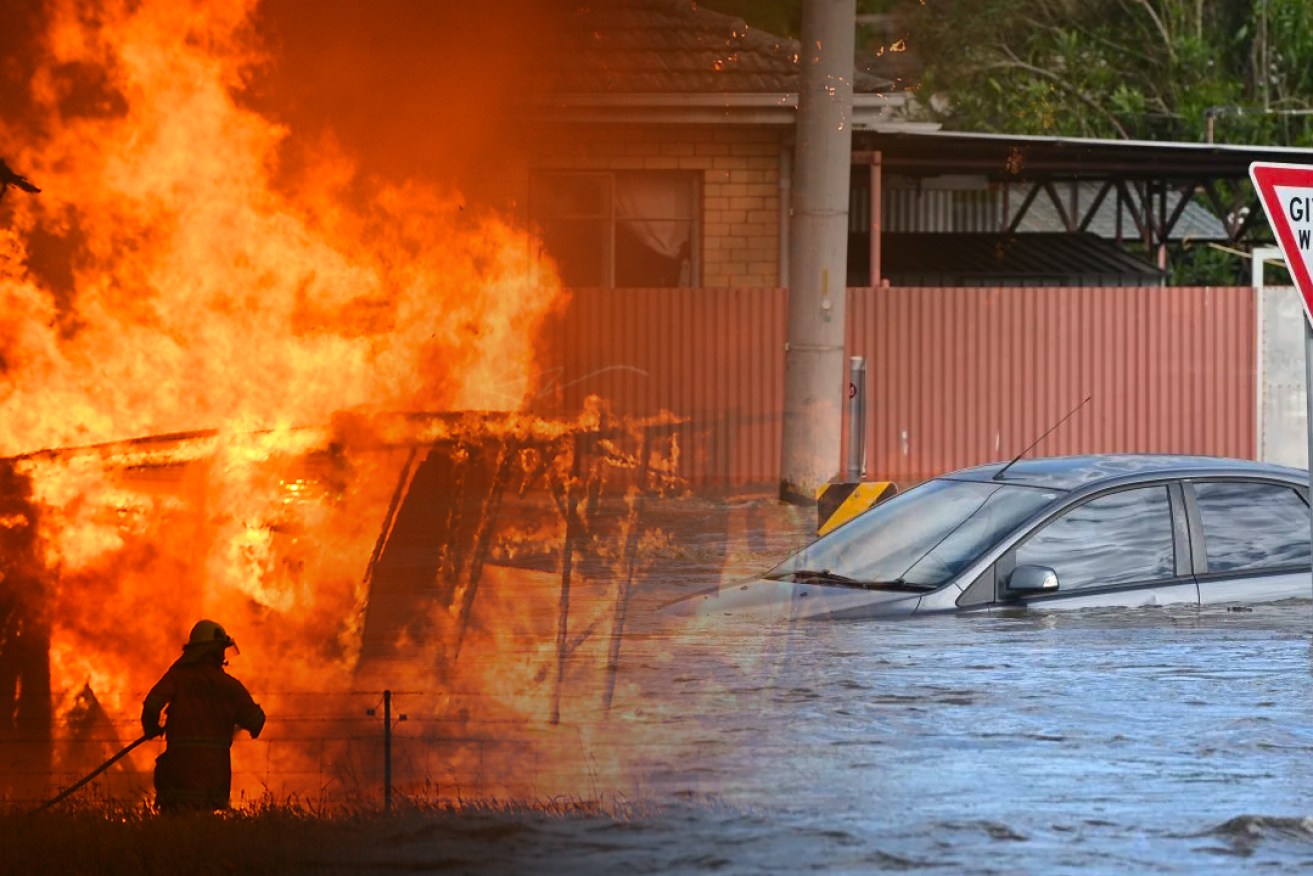Climate report warns of more flash floods and heatwaves
Intense heavy rainfall and extreme heat events are increasing across Australia impacting food supply and communities, according to the CSIRO and Bureau of Meteorology State of the Climate 2022 report released today.


Image: Tom Aldahn/InDaily
As River Murray flooding is declared a state emergency, the joint report reveals the latest scientific data and forecasting shows the nation is increasingly facing extreme heat events, intense heavy rainfall, longer fire seasons and rises in sea level.
CSIRO’s Climate Science Centre director Dr Jaci Brown said the seventh biennial report showed concentrations of greenhouse gases, such as carbon dioxide, are at the highest levels on Earth in at least two million years.
Bureau of Meteorology Manager of Climate Environmental Prediction Services, Dr Karl Braganza, said the report projected increases in air temperatures, more heat extremes and fewer cold extremes in coming decades.
“Australia’s climate has warmed on average by 1.47 degrees since 1910,” Dr Braganza said.
During La Niña events in 2021-22, eastern Australia experienced one its most significant flood periods ever observed, he said.
The report data showed heavy rainfall becoming more intense, with the number of short-duration heavy rainfall events expected to increase in the future.
In South Australia this year, the state has been hit by the most damaging storms since 2016 bringing down trees and powerlines, and heavy intense rain has caused widespread flooding.
The River Murray is now experiencing its highest flow levels in 50 years with a $51.6 million support package announced by the State Government as flooding forced some residents from homes, impacted businesses and tourism and river community homes and threatened crops.

As the state approaches bushfire season, Dr Braganza warned that the length of fire seasons has also increased across the country in recent decades.
“We’re expecting to see longer fire seasons in the future for the south and east, and an increase in the number of dangerous fire weather days,” he said.
CSIRO Agriculture and Food director Dr Michael Robertson said threats from climate change “including extreme rainfall, droughts, heatwaves and bushfires” were already impacting Australia’s agricultural industry, affecting food production and supply chains.
“Historically the sector has shown its ability to adapt to changes in climate, but we have an important role to play at CSIRO to help our farmers to build on that, navigating the growing climate risks to ensure long-term viability of rural enterprises and communities,” he said.
He said the Drought Resilience Mission focused on sustainable integrated solutions for agriculture and land use, with the Climate Services for Agriculture project showing historical weather and climate projections to help farmers see “how climate is changing in ways relevant to what they produce.”
Today the National Food Supply Chain Alliance called on the Federal Government to urgently establish a National Food Security Plan, saying ongoing natural disasters and labour shortages were set to impact food prices into the future.
The Alliance has met with the Federal Government and the Opposition over the past two days to warn of supply risks affecting the national economy. The group includes the National Farmers Federation, Australian Meat Industry Council, Independent Food Distributors Australia, Master Grocers Australia, the Australian Association of Convenience Stores, AUSVEG, Seafood Industry Australia, the Restaurant and Catering Industry Association and the Refrigerated Warehouse and the Transport Association of Australia.
The Climate Report showed a sustained, large-scale trend of lower rainfall across southern Australia and wetter conditions in northern Australia, but with an increase in the intensity of heavy rainfall events that occur in time scales of less than a day.
“The intensity of short-duration (hourly) extreme rainfall events has increased by around 10 per cent or more in some regions and in recent decades, with larger increases typically observed in the north of the country,” the report found.
“Short-duration extreme rainfall events (such as for hourly rainfall totals) are often associated with flash flooding, which brings increased risk to communities.”




